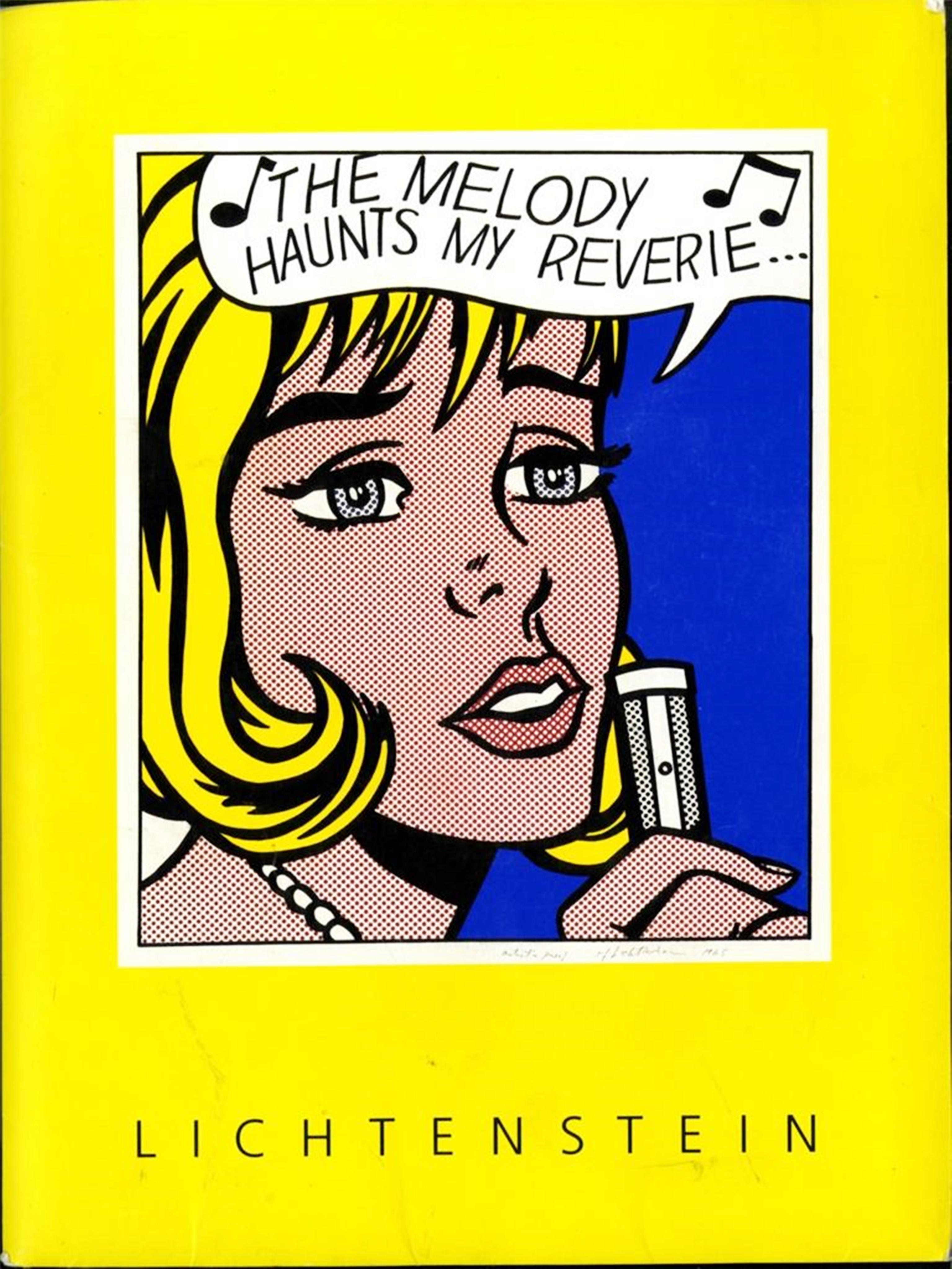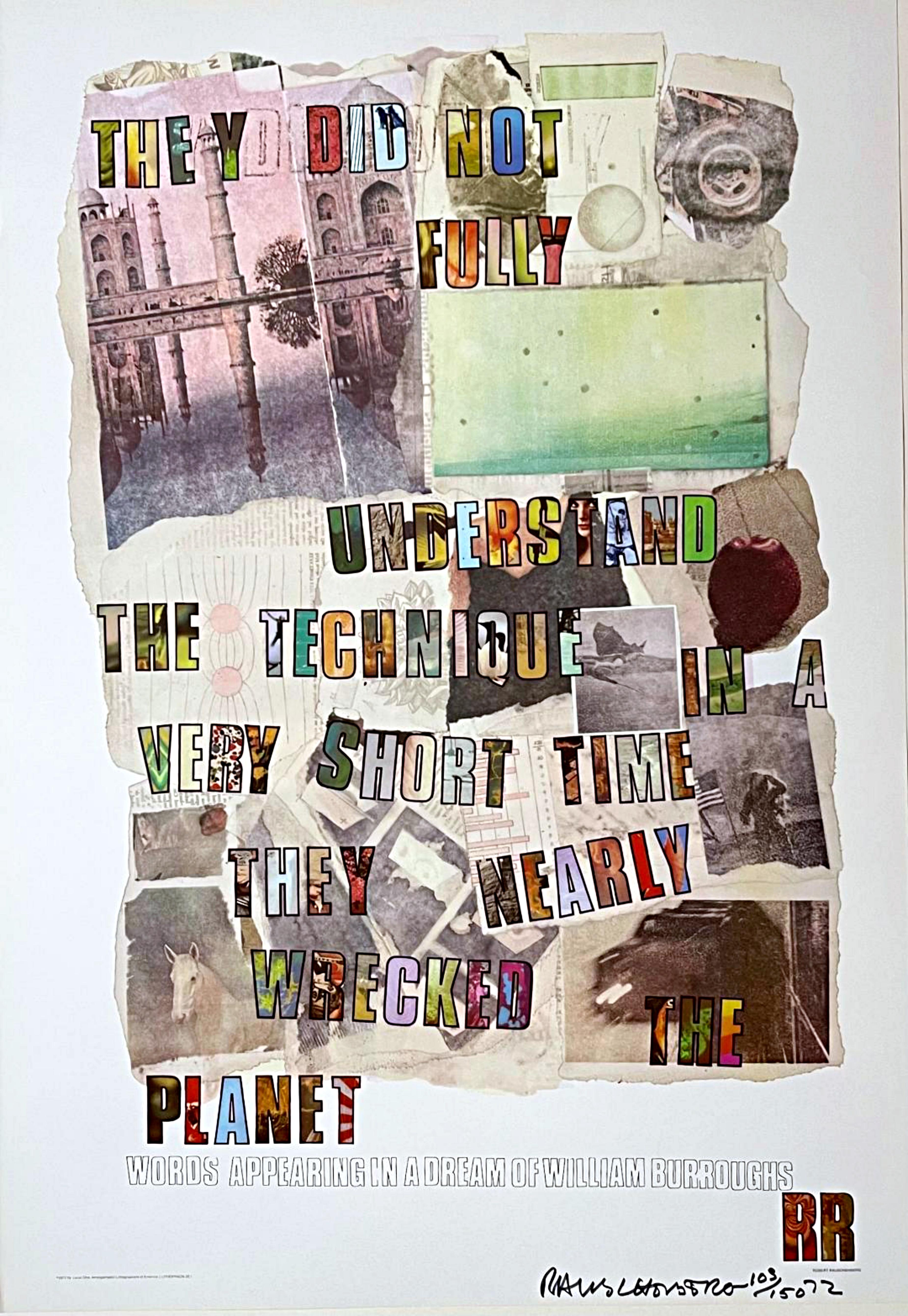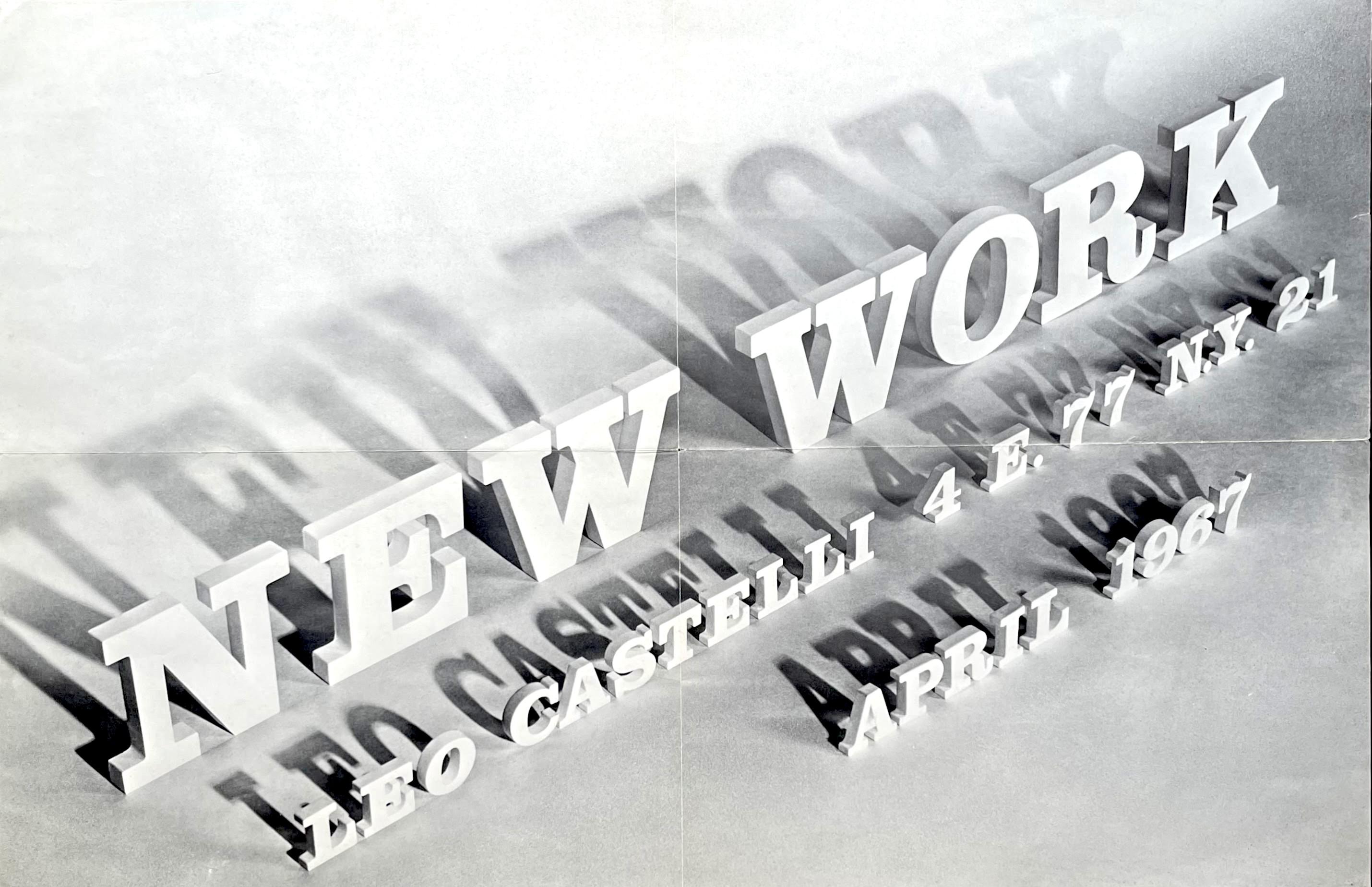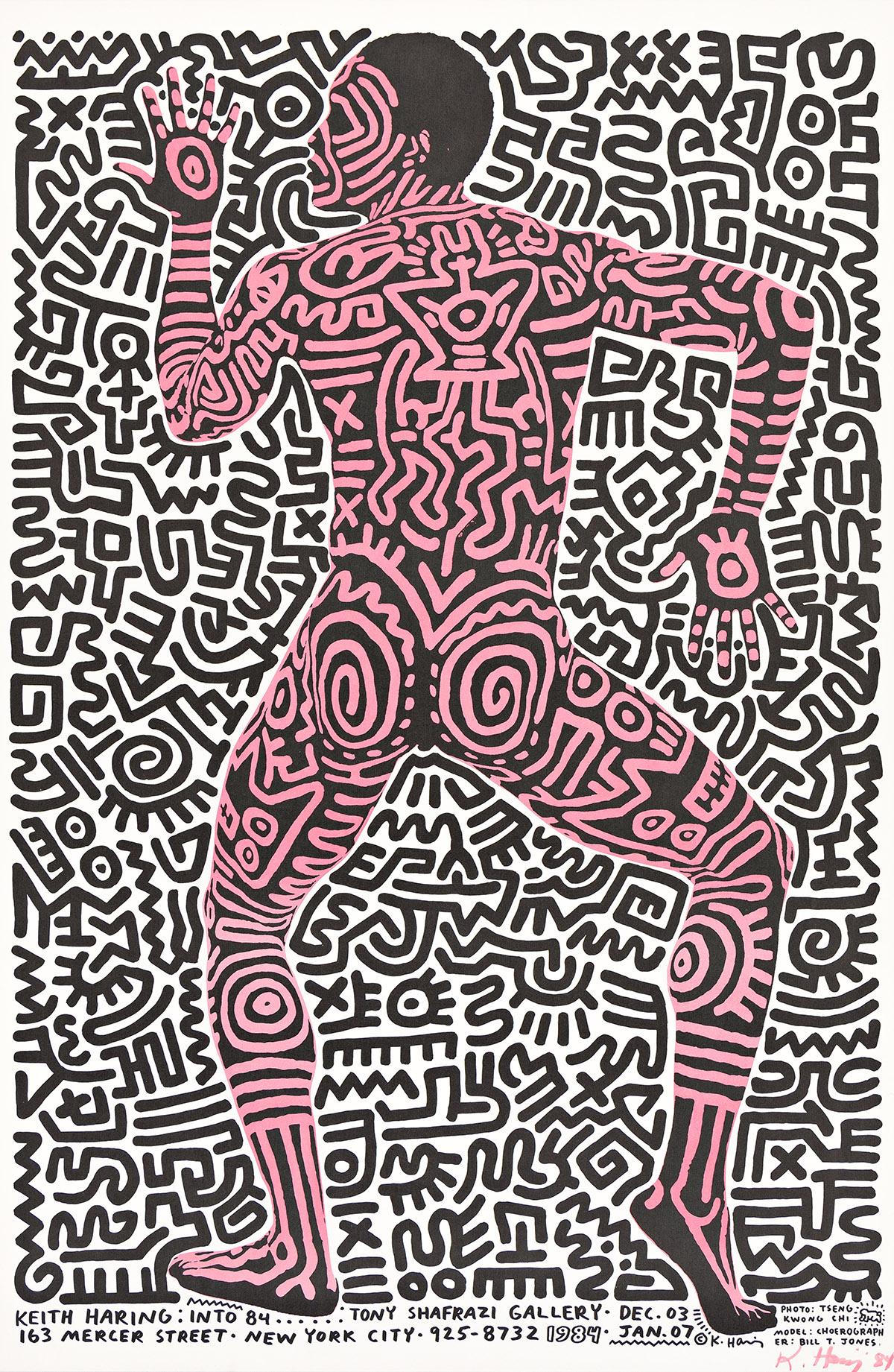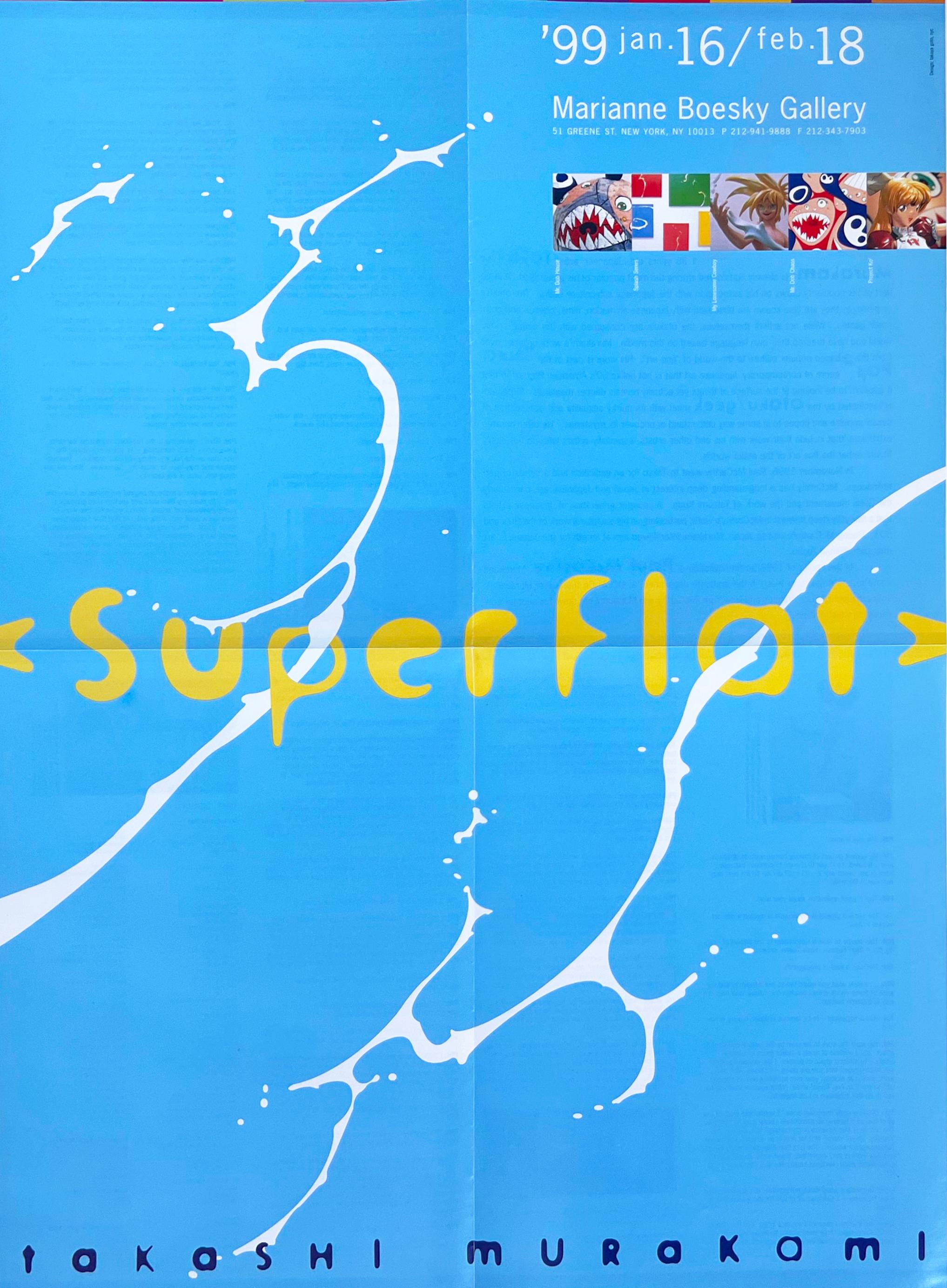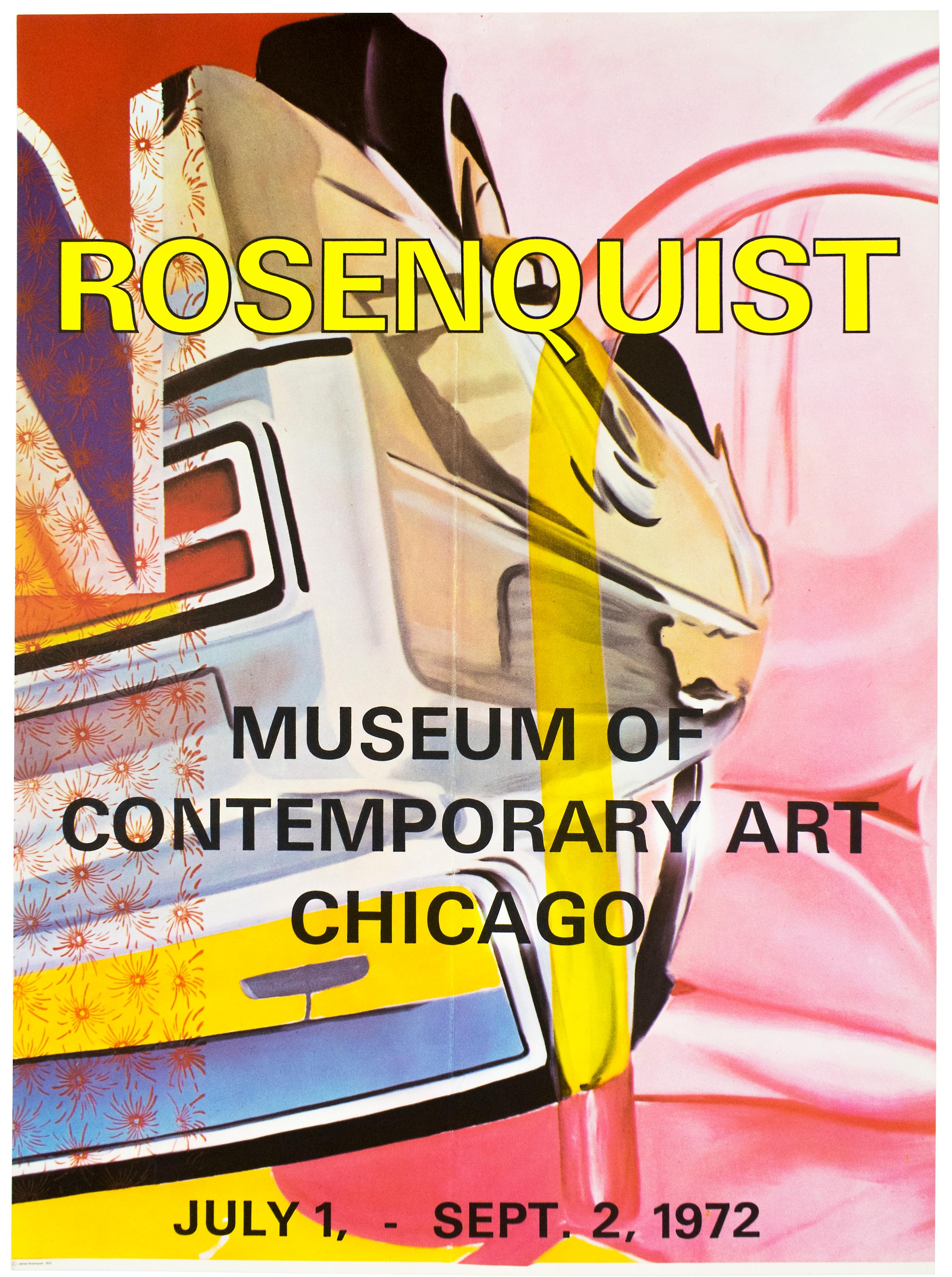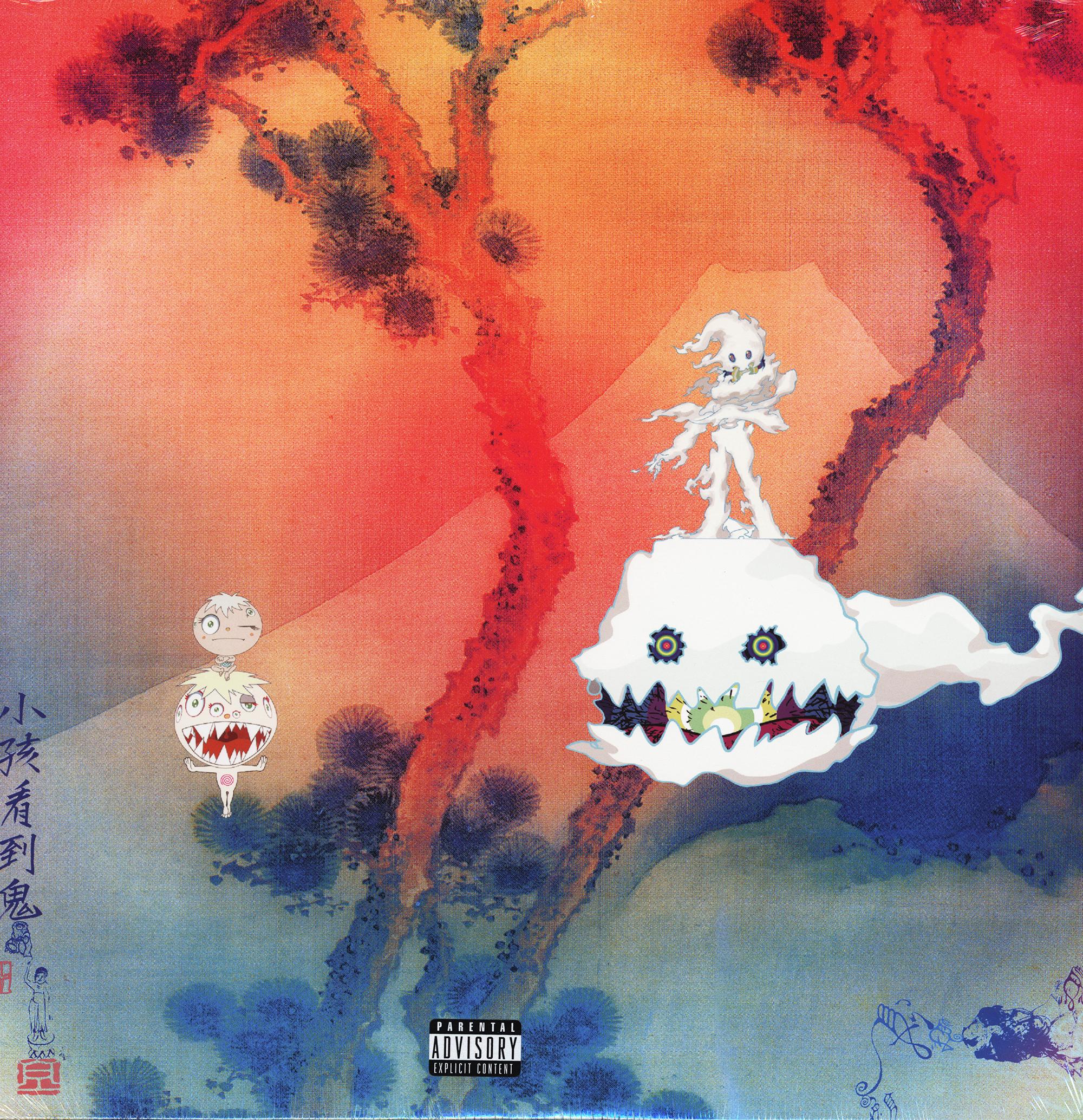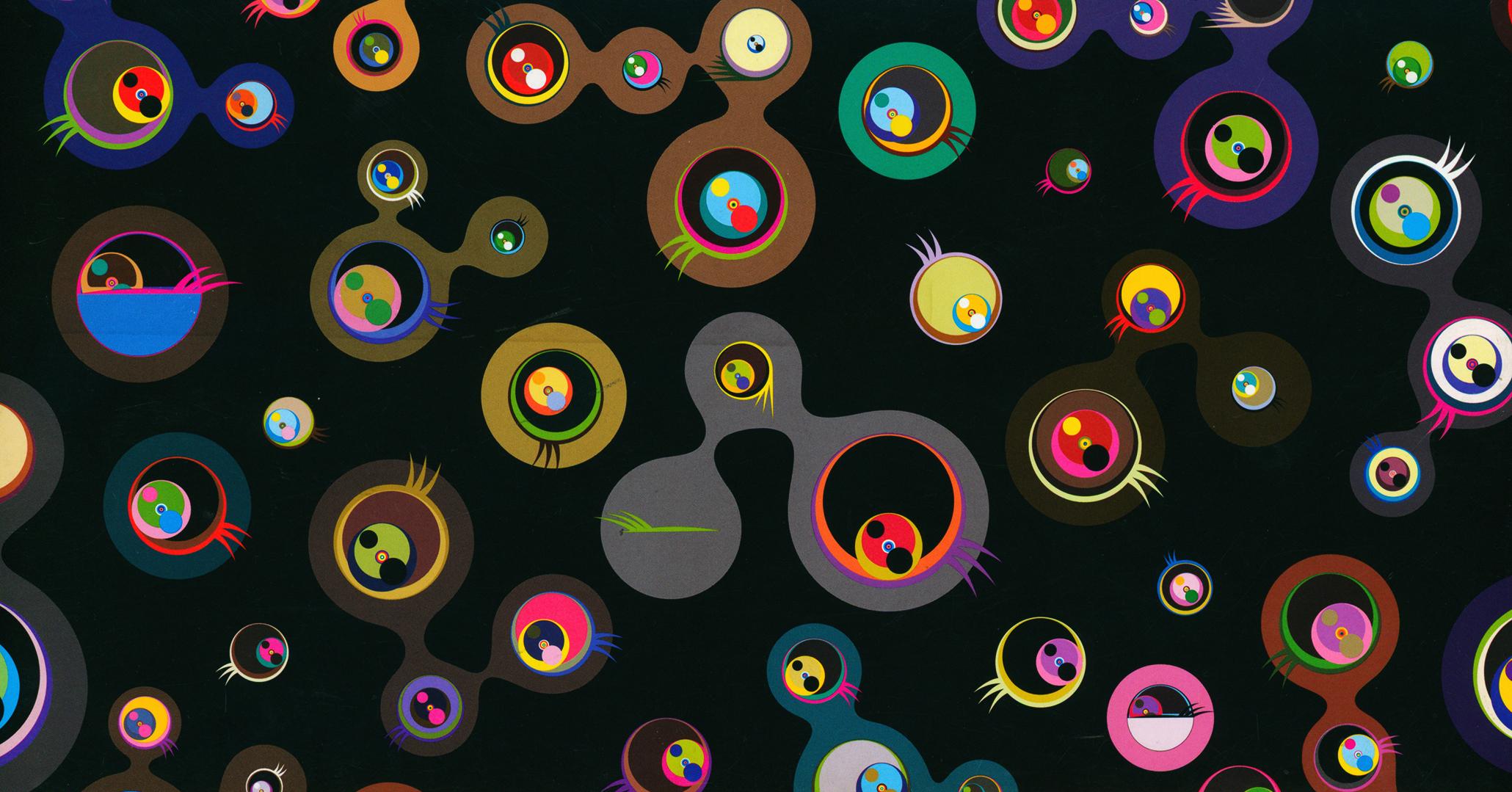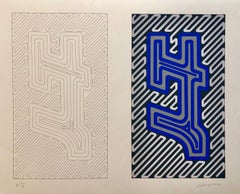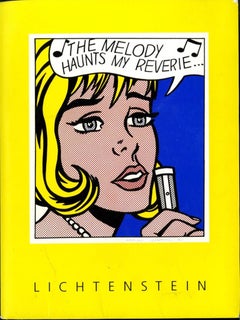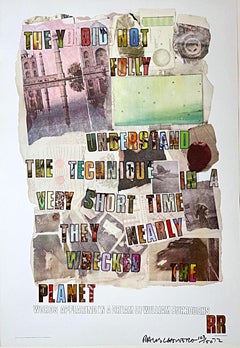
Canadian Post Modern Pop Art Lithograph Vintage Poster Memphis Galerie Maeght
View Similar Items
Want more images or videos?
Request additional images or videos from the seller
1 of 9
Jean-Paul RiopelleCanadian Post Modern Pop Art Lithograph Vintage Poster Memphis Galerie Maeght1979
1979
About the Item
- Creator:Jean-Paul Riopelle (1923-2002, Canadian)
- Creation Year:1979
- Dimensions:Height: 25.5 in (64.77 cm)Width: 19.5 in (49.53 cm)
- Medium:
- Movement & Style:
- Period:
- Condition:never framed. minor wear commensurate with age. please see photos.
- Gallery Location:Surfside, FL
- Reference Number:1stDibs: LU3824436601
About the Seller
4.9
Platinum Seller
These expertly vetted sellers are 1stDibs' most experienced sellers and are rated highest by our customers.
Established in 1995
1stDibs seller since 2014
1,543 sales on 1stDibs
Typical response time: 1 hour
More From This SellerView All
- Canadian Post Modern Pop Art Lithograph Vintage Poster Memphis Galerie MaeghtBy Jean-Paul RiopelleLocated in Surfside, FLVintage gallery exhibition poster. The Galerie Maeght is a gallery of modern art in Paris, France, and Barcelona, Catalonia, Spain. The gallery was founded in 1936 in Cannes. The Pa...Category
1970s Pop Art Abstract Prints
MaterialsLithograph, Offset
- 1970's Large Silkscreen Abstract Geometric Day Glo Serigraph Pop Art Print NeonBy Chryssa Vardea-MavromichaliLocated in Surfside, FLSilkscreen on Arches paper, Hand signed and Numbered in Pencil. Serigraph in yellow, red, silver Chryssa Vardea-Mavromichali (Greek: Χρύσα Βαρδέα-Μαυρομιχάλη; December 31, 1933 – December 23, 2013) was a Greek American artist who worked in a wide variety of media. An American art pioneer in light art and luminist sculpture widely known for her neon, steel, aluminum and acrylic glass installations, she has always used the mononym Chryssa professionally. She worked from the mid-1950s in New York City studios and worked since 1992 in the studio she established in Neos Kosmos, Athens, Greece. Chryssa was born in Athens into the famous Mavromichalis family from the Mani Peninsula. one of her sisters, who studied medicine, was a friend of the poet and novelist Nikos Kazantzakis. Chryssa began painting during her teenage years and also studied to be a social worker.In 1953, on the advice of a Greek art critic, her family sent her to Paris to study at the Académie de la Grande Chaumiere where Andre Breton, Edgard Varese, and Max Ernst were among her associates and Alberto Giacometti was a visiting professor. In 1954, at age twenty-one, Chryssa sailed for the United States, arrived in New York and went to San Francisco, California to study at the California School of Fine Arts. Returning to New York in 1955, she became a United States citizen and established a studio in the city. Chryssa's first major work was The Cycladic Books preceded American minimalism by seventeen years. 1961, Chryssa's first solo exhibition was mounted at The Guggenheim. 1963, Chryssa's work was shown at the Museum of Modern Art in curator Dorothy Canning Miller's Americans 1963 exhibition. The artists represented in the show also included Richard Anuszkiewicz, Lee Bontecou, Robert Indiana, Richard Lindner, Marisol, Claes Oldenburg, Ad Reinhardt, James Rosenquist and others. 1966, The Gates to Times Square, regarded as "one of the most important American sculptures of all time" and "a thrilling homage to the living American culture of advertising and mass communications." The work is a 10 ft cube installation of two huge letter 'A's through which visitors may walk into "a gleaming block of stainless steel and Plexiglas that seems to quiver in the play of pale blue neon light" which is controlled by programmed timers. First shown in Manhattan's Pace Gallery, it was given to the Albright-Knox Art Gallery in Buffalo, New York in 1972. 1972, The Whitney Museum of American Art mounted a solo exhibition of works by Chryssa. That's All (early 1970s), the central panel of a triptych related to The Gates of Times Square, was acquired by the Museum of Modern Art between 1975 and 1979. 1973, Chryssa's solo exhibition at the Gallerie Denise René was reviewed for TIME magazine by art critic Robert Hughes before it went on to the Galleries Denise René in Düsseldorf and Paris. Other works by Chryssa in composite honeycomb aluminum and neon in the 1980s and 1990s include Chinatown, Siren, Urban Traffic, and Flapping Birds. Chryssa 60/90 retrospective exhibition in Athens in the Mihalarias Art Center. After her long absence from Greece, a major exhibition including large aluminum sculptures - cityscapes, "neon boxes" from the Gates to the Times Square, paintings, drawings etc. was held in Athens. In 1992, after closing her SoHo studio, which art dealer Leo Castelli had described as "one of the loveliest in the world," Chryssa returned to Greece. She found a derelict cinema which had become a storeroom stacked with abandoned school desks and chairs, behind the old Fix Brewery near the city center in Neos Kosmos, Athens. Using the desks to construct enormous benches, she converted the space into a studio for working on designs and aluminum composite honeycomb sculptures...Category
1980s Pop Art Abstract Prints
MaterialsScreen
- 1970's Large Silkscreen Abstract Geometric Day Glo Serigraph Pop Art Print NeonBy Chryssa Vardea-MavromichaliLocated in Surfside, FLSilkscreen on Arches paper, Hand signed and Numbered in Pencil. Serigraph in white, back, blue gray (silver). Chryssa Vardea-Mavromichali (Greek: Χρύσα Βαρδέα-Μαυρομιχάλη; December 31, 1933 – December 23, 2013) was a Greek American artist who worked in a wide variety of media. An American art pioneer in light art and luminist sculpture widely known for her neon, steel, aluminum and acrylic glass installations, she has always used the mononym Chryssa professionally. She worked from the mid-1950s in New York City studios and worked since 1992 in the studio she established in Neos Kosmos, Athens, Greece. Chryssa was born in Athens into the famous Mavromichalis family from the Mani Peninsula. one of her sisters, who studied medicine, was a friend of the poet and novelist Nikos Kazantzakis. Chryssa began painting during her teenage years and also studied to be a social worker.In 1953, on the advice of a Greek art critic, her family sent her to Paris to study at the Académie de la Grande Chaumiere where Andre Breton, Edgard Varese, and Max Ernst were among her associates and Alberto Giacometti was a visiting professor. In 1954, at age twenty-one, Chryssa sailed for the United States, arrived in New York and went to San Francisco, California to study at the California School of Fine Arts. Returning to New York in 1955, she became a United States citizen and established a studio in the city. Chryssa's first major work was The Cycladic Books preceded American minimalism by seventeen years. 1961, Chryssa's first solo exhibition was mounted at The Guggenheim. 1963, Chryssa's work was shown at the Museum of Modern Art in curator Dorothy Canning Miller's Americans 1963 exhibition. The artists represented in the show also included Richard Anuszkiewicz, Lee Bontecou, Robert Indiana, Richard Lindner, Marisol, Claes Oldenburg, Ad Reinhardt, James Rosenquist and others. 1966, The Gates to Times Square, regarded as "one of the most important American sculptures of all time" and "a thrilling homage to the living American culture of advertising and mass communications." The work is a 10 ft cube installation of two huge letter 'A's through which visitors may walk into "a gleaming block of stainless steel and Plexiglas that seems to quiver in the play of pale blue neon light" which is controlled by programmed timers. First shown in Manhattan's Pace Gallery, it was given to the Albright-Knox Art Gallery in Buffalo, New York in 1972. 1972, The Whitney Museum of American Art mounted a solo exhibition of works by Chryssa. That's All (early 1970s), the central panel of a triptych related to The Gates of Times Square, was acquired by the Museum of Modern Art between 1975 and 1979. 1973, Chryssa's solo exhibition at the Gallerie Denise René was reviewed for TIME magazine by art critic Robert Hughes before it went on to the Galleries Denise René in Düsseldorf and Paris. Other works by Chryssa in composite honeycomb aluminum and neon in the 1980s and 1990s include Chinatown, Siren, Urban Traffic, and Flapping Birds. Chryssa 60/90 retrospective exhibition in Athens in the Mihalarias Art Center. After her long absence from Greece, a major exhibition including large aluminum sculptures - cityscapes, "neon boxes" from the Gates to the Times Square, paintings, drawings etc. was held in Athens. In 1992, after closing her SoHo studio, which art dealer Leo Castelli had described as "one of the loveliest in the world," Chryssa returned to Greece. She found a derelict cinema which had become a storeroom stacked with abandoned school desks and chairs, behind the old Fix Brewery near the city center in Neos Kosmos, Athens. Using the desks to construct enormous benches, she converted the space into a studio for working on designs and aluminum composite honeycomb sculptures...Category
1980s Pop Art Abstract Prints
MaterialsScreen
- 1970's Large Silkscreen Abstract Geometric Day Glo Serigraph Pop Art Print NeonBy Chryssa Vardea-MavromichaliLocated in Surfside, FLSilkscreen on Arches paper, Hand signed and Numbered in Pencil. Serigraph in blue gray (silver). Chryssa Vardea-Mavromichali (Greek: Χρύσα Βαρδέα-Μαυρομιχάλη; December 31, 1933 – December 23, 2013) was a Greek American artist who worked in a wide variety of media. An American art pioneer in light art and luminist sculpture widely known for her neon, steel, aluminum and acrylic glass installations, she has always used the mononym Chryssa professionally. She worked from the mid-1950s in New York City studios and worked since 1992 in the studio she established in Neos Kosmos, Athens, Greece. Chryssa was born in Athens into the famous Mavromichalis family from the Mani Peninsula. one of her sisters, who studied medicine, was a friend of the poet and novelist Nikos Kazantzakis. Chryssa began painting during her teenage years and also studied to be a social worker.In 1953, on the advice of a Greek art critic, her family sent her to Paris to study at the Académie de la Grande Chaumiere where Andre Breton, Edgard Varese, and Max Ernst were among her associates and Alberto Giacometti was a visiting professor. In 1954, at age twenty-one, Chryssa sailed for the United States, arrived in New York and went to San Francisco, California to study at the California School of Fine Arts. Returning to New York in 1955, she became a United States citizen and established a studio in the city. Chryssa's first major work was The Cycladic Books preceded American minimalism by seventeen years. 1961, Chryssa's first solo exhibition was mounted at The Guggenheim. 1963, Chryssa's work was shown at the Museum of Modern Art in curator Dorothy Canning Miller's Americans 1963 exhibition. The artists represented in the show also included Richard Anuszkiewicz, Lee Bontecou, Robert Indiana, Richard Lindner, Marisol, Claes Oldenburg, Ad Reinhardt, James Rosenquist and others. 1966, The Gates to Times Square, regarded as "one of the most important American sculptures of all time" and "a thrilling homage to the living American culture of advertising and mass communications." The work is a 10 ft cube installation of two huge letter 'A's through which visitors may walk into "a gleaming block of stainless steel and Plexiglas that seems to quiver in the play of pale blue neon light" which is controlled by programmed timers. First shown in Manhattan's Pace Gallery, it was given to the Albright-Knox Art Gallery in Buffalo, New York in 1972. 1972, The Whitney Museum of American Art mounted a solo exhibition of works by Chryssa. That's All (early 1970s), the central panel of a triptych related to The Gates of Times Square, was acquired by the Museum of Modern Art between 1975 and 1979. 1973, Chryssa's solo exhibition at the Gallerie Denise René was reviewed for TIME magazine by art critic Robert Hughes before it went on to the Galleries Denise René in Düsseldorf and Paris. Other works by Chryssa in composite honeycomb aluminum and neon in the 1980s and 1990s include Chinatown, Siren, Urban Traffic, and Flapping Birds. Chryssa 60/90 retrospective exhibition in Athens in the Mihalarias Art Center. After her long absence from Greece, a major exhibition including large aluminum sculptures - cityscapes, "neon boxes" from the Gates to the Times Square, paintings, drawings etc. was held in Athens. In 1992, after closing her SoHo studio, which art dealer Leo Castelli had described as "one of the loveliest in the world," Chryssa returned to Greece. She found a derelict cinema which had become a storeroom stacked with abandoned school desks and chairs, behind the old Fix Brewery near the city center in Neos Kosmos, Athens. Using the desks to construct enormous benches, she converted the space into a studio for working on designs and aluminum composite honeycomb sculptures...Category
1980s Pop Art Abstract Prints
MaterialsScreen
- Hungarian Surrealism Pop Art Hebrew Silkscreen Judaica Print Jewish SerigraphBy Jozsef JakovitsLocated in Surfside, FLAbstract Hebrew Prints on heavy mould made paper from small edition of 15. there is a facing page of text in Hungarian folded over. Hard edged geometric abstract prints in color base...Category
1980s Pop Art Abstract Prints
MaterialsArchival Paper, Screen
- Surrealist Abstract Hebrew Aleph Pop Art Silkscreen Judaica Jewish SerigraphBy Jozsef JakovitsLocated in Surfside, FLAbstract Hebrew Prints on heavy mould made paper from small edition of 15. there is a facing page of text in Hungarian folded over. Hard edged geometric abstract prints in color base...Category
1980s Pop Art Abstract Prints
MaterialsArchival Paper, Screen
You May Also Like
- Vintage Museum Press Kit (National Gallery, LACMA & Dallas Museum)By Roy LichtensteinLocated in New York, NYRoy Lichtenstein Vintage Museum Press Kit (National Gallery, LACMA & Dallas Museum), 1994 -1995 Offset Lithograph brochures, press releases, magazines and a bookmark 12 x 9 inches Un...Category
1990s Pop Art Abstract Prints
MaterialsLithograph, Offset
- Lt. Ed. Roy Lichtenstein museum poster Hand Signed and dated by Roy LichtensteinBy Roy LichtensteinLocated in New York, NYRoy Lichtenstein 1970-1980 (Hand Signed and dated by Roy Lichtenstein), 1981 Offset lithograph. Hand signed and dated in ink Hand-signed by artist, ...Category
1980s Pop Art Abstract Prints
MaterialsOffset, Lithograph, Ink
- Dream of William Burroughs (rare 1970s limited edition lithograph) for Earth DayBy Robert RauschenbergLocated in New York, NYROBERT RAUSCHENBERG Dream of William Burroughs, 1972 Offset lithograph 34 1/2 × 24 inches Edition 103/150 Signed, dated and numbered in black marker on the front Unframed Wonderful early 1970s print Words appearing in a dream of William Burroughs Co-published by Automation House and E.A.T., produced by Local One, Amalgamated Lithographers of America, New York Signed and numbered 103/150 in black marker This work is registered with the Robert Rauschenberg archives, reference number: RRF 72.E001 Text reads: THEY DID NOT FULLY UNDERSTAND THE TECHNIQUE. IN A VERY SHORT TIME THEY NEARLY WRECKED THE PLANET. More information about this work from the Rauschenberg Foundation: Lithopinion 26, the current affairs and graphic arts journal, dedicated its summer 1972 edition to the subject of “Our Transportation Mess.” Among the contributors were Theodore Kheel, who was a lawyer, leading labor mediator and arbitrator, as well as an environmentalist, and Senator Edward Kennedy. Kheel commissioned artists such as Romare Bearden, Christo, and Rauschenberg, his friend and client, to address the transportation system in the United States. Rauschenberg’s contribution was inspired by a dream that William Burroughs, the Beat writer, had described to him, and which resulted in the lithograph Dream of William Burroughs (1972) published by Experiments in Art and Technology (E.A.T.). Surrounded by images of various modes of transportation, the lithograph includes the words: “They did not fully understand the technique / in a very short time they nearly wrecked the planet.” As an E.A.T. board member, Kheel understood, like Rauschenberg, that environmentalism and technology were not conflicting views but symbiotic relationships. In Lithopinion 26, E.A.T. stated that it “supports technology when it tries to help people achieve their human potentiality [and] criticizes it when it doesn’t.” About Robert Rauschenberg: Robert Rauschenberg ushered in a new era of postwar American art in the wake of Abstract Expressionism. His approach, along with that of his contemporary Jasper Johns, was sometimes termed “Neo-Dada,” due to its relation to both European forebears and the physical gestures of American Abstract Expressionists. His Combine works (1954 to early 1960s) blurred the distinctions between painting and sculpture, as their flat surfaces were augmented with discarded materials and appropriated images. Rauschenberg also worked with photography, printmaking, papermaking, and performance, the last of which resulted in a number of collaborations with choreographers, including Merce Cunningham, Paul Taylor, and Trisha Brown. Rauschenberg was among the founding members of the innovative group Experiments in Art and Technology (E.A.T.) in 1966, and in 1984 he established the Rauschenberg Overseas Culture Interchange (ROCI) to bring art to communities around the world, saying, “I feel strong in my beliefs, based on my varied and widely traveled collaborations, that a one-to-one contact through art contains potent peaceful powers, and is the most non-elitist way to share exotic and common information, seducing us into creative mutual understandings for the benefit of all.” Rauschenberg’s nontraditional art practice and creative energy generated an enduring influence that impacted generations of artists, as noted by art historian Branden W. Joseph: “Rauschenberg’s was a position with which artists across the board were confronted and to which they almost necessarily had to respond. … Rauschenberg’s work served as a stimulus, an impetus and a challenge.” Robert Rauschenberg was born in 1925, in Port Arthur, Texas and died on Captiva Island, Florida in 2008. He has had numerous exhibitions worldwide, including “Robert Rauschenberg: A Retrospective,” Solomon R. Guggenheim Museum, New York (1997, traveled to Menil Collection, Contemporary Arts Museum, and Museum of Fine Arts, Houston, Museum Ludwig, Cologne and Guggenheim Museum, Bilbao, through 1999); “Combines,” Metropolitan Museum of Art, New York (2005, traveled to Museum of Contemporary Art, Los Angeles, Centre Pompidou, Paris, and Moderna Museet, Stockholm in 2007); “Cardboards and Related Pieces,” Menil Collection, Houston (2007); “Traveling ‘70–‘76,” Museu de Arte Contemporânea de Serralves, Porto (2008, traveled to Haus der Kunst, Munich, and Madre, Naples in 2009); “Gluts,” The Peggy Guggenheim Collection, Venice (2009, traveled to The Tinguely Museum, Basel, Guggenheim Museum Bilbao, and Villa e Collezione Panza, Varese in 2010); and “Botanical Vaudeville,” Inverleith House, Royal Botanic Garden, Edinburgh (2011). Gagosian Gallery first exhibited Robert Rauschenberg’s work in 1986. About William Burroughs William S. Burroughs was a Beat Generation writer known for his startling, nontraditional accounts of drug culture...Category
1970s Pop Art Abstract Prints
MaterialsOffset, Permanent Marker, Lithograph
- New Work, Leo Castelli Gallery poster (Roy Lichtenstein, Stella, Chamberlain)Located in New York, NYRare collectors item: Roy Lichtenstein, Frank Stella, John Chamberlain New Work, Leo Castelli poster, 1967 Offset lithograph poster invitation with original folds, addressee and post...Category
1960s Pop Art Abstract Prints
MaterialsOffset, Lithograph
- Keith Haring: Into 1984/Tony Shafrazi GalleryBy Keith HaringLocated in New York, NYColor offset lithograph. Signed and dated in felt-tip pen and pink ink, lower right. Published by Tony Shafrazi Gallery, New York.Category
1980s Pop Art Abstract Prints
MaterialsColor, Lithograph, Offset
- Takashi Murakami 'Superflat' exhibition poster (vintage Takashi Murakami)By Takashi MurakamiLocated in NEW YORK, NYTakashi Murakami Superflat Exhibition Poster 1999: Rare 1990s exhibit poster designed by Murakami and published by Marianne Boesky Gallery New York...Category
21st Century and Contemporary Pop Art Abstract Prints
MaterialsLithograph, Offset
Recently Viewed
View AllMore Ways To Browse
Large Miro Lithograph
Meuble Retro Meubles
Vintage Spray Paint Can
Vintage Spray Paint Cans
Georges Braque Poster
Add Fuel
Large Trough
Art Exhibit Poster 1950s
Love Russian Poster
Joan Miro 1958
Vintage Auction Posters
Vintage 1940s Mexican
Calder Exhibition Poster
Andre Wilder
From Russia With Love Poster
Art Exhibition Poster Calder
Giacometti Post
Kelly 25 Black

